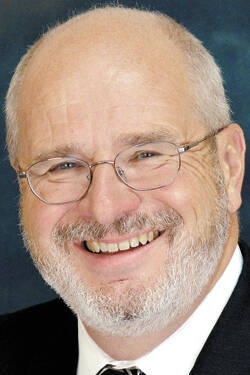We’ve reached the moment in an election year when polls can deceive just as much as they enlighten.
The problem isn’t that pollsters are lying to us.
Far from it.
If anyone is dedicated to finding out how the public feels about a candidate, issue or campaign, it’s a pollster. Because the information they provide is all they have to trade, reliable pollsters go to extraordinary lengths to try to gauge public sentiment.
They do so in the face of significant challenges.
Some have developed recently. Polling was easier when we were a country that used telephone landlines to communicate.
Tracking the moods and mindset of a more transient society that uses multiple forms of interpersonal communication is a tremendously difficult task. Finding representative samples of voters these days just takes more time, energy, thought and money.
This is why polls vary so much now. It’s hard to hit a target that’s moving around as much as we do.
But the real reason polls are hard to trust this late in a campaign — particularly in a presidential campaign of this sort—is not a problem of recent vintage.
Polls, as pollsters love to tell us, are snapshots of a moment, not penetrating portraits. They’re good at registering surface sentiments, but not great at measuring depth of feeling or exploring nuance.
That’s why we have been surprised in the past.
People point to the 2016 presidential election in which Donald Trump eked out a victory in the Electoral College — albeit while losing the national popular vote by a margin of 3 million ballots. The polls going into Election Day that year had Democrat Hillary Clinton comfortably ahead.
Most pollsters gave Trump a 10% chance of winning.
What they didn’t calculate — because polls can’t calculate such things — was voter familiarity and fatigue with not just Hillary Clinton but also her husband, former President Bill Clinton.
It’s a cliché in politics that undecided voters almost never break in the direction of an incumbent. If someone doesn’t know whether he or she wants to support a candidate for reelection after seeing that candidate in office for two, four or six years in the last days of a race, then there is not much a campaign can do to persuade them.
In 2016, Clinton wasn’t an incumbent, but the nation’s voters had known her for a quarter-century. If they weren’t already committed to her as the campaign that year wound down, there wasn’t much she could do to bring them over.
Trump captured most of the undecideds in the last days of that race. Voters didn’t know much about him at that point, but they did know Clinton and they decided they wanted something different.
It had happened before.
The last polls going into the 1980 presidential contest had President Jimmy Carter ever so slightly ahead of Republican challenger Ronald Reagan.
Reagan, though, won in a blowout—because, again, almost all the undecideds determined they were tired of Carter and wanted a change.
Like 2016, there is no actual incumbent running this year after President Joe Biden has stepped aside for Vice President Kamala Harris.
But Trump, like Hillary Clinton, now is a familiar figure on the national stage, one who tires if not exhausts many voters. There are maybe five eligible voters in the entire United States who do not have an opinion one way or the other about Donald Trump — and all five of them have been in unremitting comas since 2015.
Harris, on the other hand, is still a relative unknown, which accounts for the uneasiness about her candidacy most polls reveal. She has that in common with the Trump of 2016 and the Reagan of 1980.
When the undecideds go to the polls, they’re not likely to cast their ballots for Donald Trump.
Trump, whose instinct for self-preservation always has been first-rate, seems to sense this. That’s why he’s making no attempt to persuade anyone who is not already committed to him to vote for him.
Instead, he’s focusing all of his attention on his base. He knows his best—and maybe his only—hope is to stir his most devoted followers to turn out in record numbers.
Trump, unlike many political professionals, is savvy enough to understand that wavering voters rarely turn in the direction of the devil they know.
Which tilts the odds in favor of the devil they don’t know.
John Krull is director of Franklin College’s Pulliam School of Journalism and publisher of TheStatehouseFile.com, a news website powered by Franklin College journalism students. The views expressed are those of the author only and should not be attributed to Franklin College. Send comments to [email protected].





